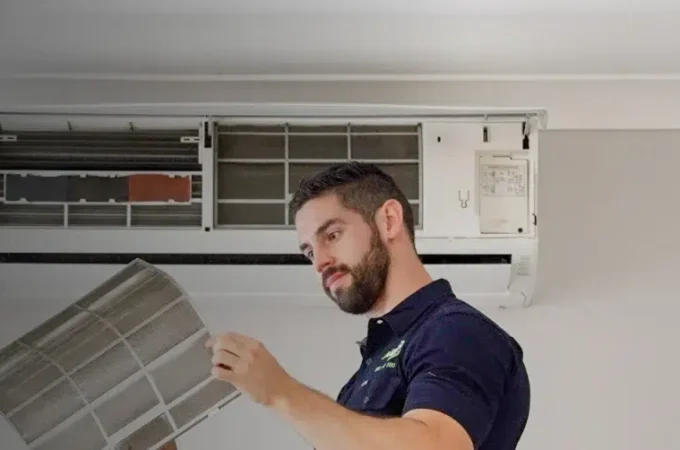
The Dos and Don’ts of Basement Finishing
Basement finishing is like one of the top final goals for many homeowners. They dream of installing a home theater, a play room, or even a separate living area in place of the unlivable storage space that basements usually are. Most put it off for later, as it isn’t exactly a necessity, but it’s clear that it has untapped potential that can be used at any point.
The process can get complicated, depending on what goals you set. Regardless of this, once completed, a finished basement grants you more functional living areas to move in. Plus, it will give your property value a definite boost.
But we’re getting ahead of ourselves here. To reach your dream basement goals, first we need to know the dos and don’ts of basement finishing.
Why you need a finished basement
Finished basements are an asset to any property. It usually increases the value, mainly because of the extra living space that it provides. Also, who would prefer a dank and creepy basement over a warm and welcoming finished space?
Without finishing, the large basement space is typically wasted as a storage area. You can use it for more than that, since finished basements don’t need much. A few additional lights and maybe a little heating and insulation, and you can call it quits.
Still, it doesn’t hurt to do a little more with regards to this. You’re already doing it anyway, so why not go the extra mile? Going the extra mile doesn’t mean all or nothing. Little steps can take a finished basement so far that it will be unrecognizable by the end.
A few things you can do to a finished basement is turn it into an entertainment space for guests or an independent living area for family or tenants. Make the most out of your efforts by efficiently utilizing this space.
Dos for Finished Basements
DO: Keep an emergency budget
No matter how much planning you put into your budget, surprise expenses will almost always show up. It might be caused by accidents or an unanticipated repair. Either way, a lack of emergency funding for such a scenario will result in delayed construction, or even worse, an abandoned project.
Protect your progress by putting away at least 10% extra for emergency costs.
DO: Plan around your existing units
As much as it is a blank canvas, a normal basement typically contains big and clunky household units like the HVAC system and laundry equipment. Remember that the main goal in basement finishing is to upgrade the space you already have, and that includes adding to its utility rather than taking away from it.
You can pretty much do anything to the rest of the basement space, but make sure important existing units and appliances keep their dedicated spots. Water-related units (water heater, HVAC system, washing machine) are better off in unfinished spaces, as future leaks will only ruin the work you do.
These can be easily walled off in their own section if you’re worried about safety or aesthetics, especially if the finished basement is meant to become a frequently-visited place in your home.
DO: Take moisture and insulation seriously
A cardinal sin in basement finishing is neglecting to factor in the moisture. Basements are notorious for being damp, finishing it won’t change that. Failing to properly insulate your newly finished basement against cold and moisture can only lead to bad things for your efforts.
First off, check your basement for the trademark musky scent, wall cracks, peeling paint, rust, or discoloration. All these point towards water issues, so best address those before laying down your finishing touches. Then look for decent insulating materials. Check the codes for appropriate insulation, as some materials might be deemed unsafe as time pass.
DO: Let there be light
Shake away your basement’s old reputation of creepiness by adding lots of light sources. Since natural light is a rare sight in basements, you must take advantage of your existing wiring to determine how and where you’ll place the added lights.
Recessed lighting is a good option, and are easy to install with dropped ceilings. This way, precious headspace won’t be occupied by multiple light fixtures.
DO: Have an escape route
Having escape routes in any case is always a good idea, but more so if you plan on turning the basement into a bedroom. Building codes might require egress windows, specifically those that are large enough for a fully-geared firefighter.
DO: Test for Radon
Whatever you do, do not ever neglect to test for Radon. It is an odorless radioactive gas that can seep into your basement, and can eventually cause major harm to you and your family.
It is best to hire a licensed professional who is equipped in detecting and managing this issue.

Don’ts for Finished Basements
DON’T: Plan big with a small budget
“Thinking big” is easy, but not when you have a limited budget. Make sure you have the basics laid out first, before you jump into bigger and more specific parts of basement finishing.
DON’T: Change plans
As much as you can, never change plans in the middle of construction. Regardless of whether you’re hiring a contractor or DIY-ing this project, midway changes cost extra and will cause delays.
Clean up your plans right at the beginning, and don’t be afraid to ask all the questions you have.
DON’T: Be scared of contractors
Sure, you’ll be paying for their labor, but you’ll also be paying for their professional skills and your peace of mind. Unless you have a solid background in construction and carpentry, there will always be that little voice asking you if you’re doing this DIY right. It’s better to be safe than sorry, especially if it’s regarding the safety of the structure.
DIY projects to express yourself can wait until later – once all the big construction parts are done. For the ground & grind work, you should hire a professional like prestigebasementfinishing.com
DON’T: Forget your aesthetics
Basements don’t have to have the bare minimum. Gone are the days of bare walls and cement floors. If you’re already finishing your basement, then do it according to your style. Staying within budget for your chosen aesthetics is easy to do, and it can be done gradually too.
Using one color scheme for the majority of the space can help in widening it, make it feel less stuffy. Additionally, utilize the height space more; put in shelves and compartments to avoid crowding the area.
With small additions over time, you can turn your finished basement into the best hangout spot in your home.




